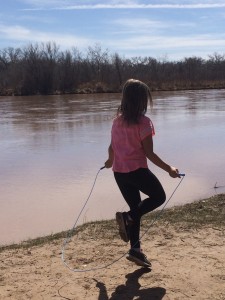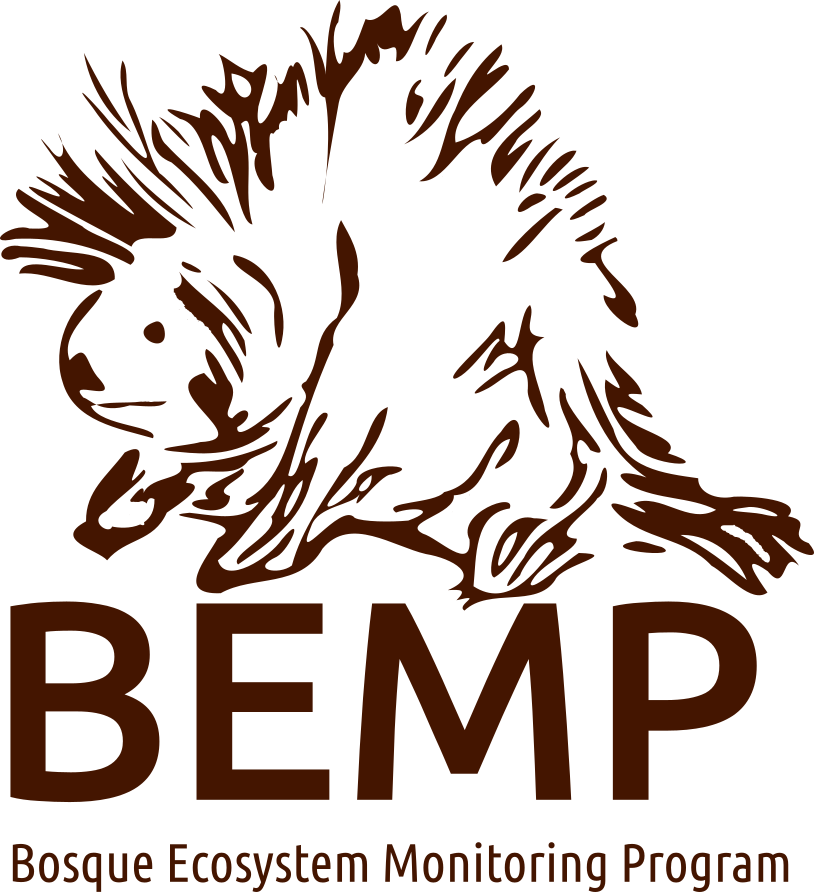As I complete my internship with BEMP, it is hard to sum up everything I have observed and learned. I came to BEMP because it seemed to combine two of my passions: youth empowerment and environmental stewardship. I was also interested in the idea of a program centered around watershed education, especially in the American southwest during this historic drought.
I grew up in the San Francisco Bay Area, and life seemed defined by water: by the Bay, the ocean, and the drought. Adults gave me confusing and conflicting answers about the lack of water–the problem was urban waste, or agricultural greed, it was almonds or alfalfa. My main education on the subject focused on conservation tips and scare tactics to motivate us to use them. I felt so helpless. It seemed like any moment I might turn on the tap and nothing would come out.

A Stormwater Science lesson at Bosque School
At BEMP, students are given information and tools to understand, study, and protect the Rio Grande watershed and the surrounding ecosystem. Through classes like River of Change students learn a 2,000 year history of the river and local ecosystem. They learn what the floodplain was like before humans came, the mechanisms used to change it over time, and the (often unintended) consequences of these changes. In classes like Stormwater Science and Agua Adventures students make the connection between the river, the aquifer, and their tap. They get to know their unique watershed, where the water comes from and where it goes–and what it might pick up along the way. The education is delivered in a way that is interactive, hands-on, and fun, with classes frequently requiring a wagon full of props and activities!

A Bandelier 3rd grader by the Rio Grande
Ultimately, the magic of BEMP lies beyond the classroom, however. Through BEMP, students are not only aware of the status of the groundwater, precipitation, and river quality–they are the ones testing it. Classes who do Monthly Monitoring know they are responsible for understanding their little piece of the river, and they take it seriously. Month after month, they record its vitals, witness seasonal transformations, and unravel its secrets. One group of students I accompanied monitoring excitedly lead myself and their teacher down an unfamiliar trail to the river, proud that they know the terrain well enough to be our guides. It was remarkable to see the sense of ownership and connection to the ecosystem.
Another important theme I saw during my work here was the sense of community. BEMP relies on partnerships with teachers, school administrators, as well as UNM students and faculty. Students are working together with their peers, aware that they are part of a network of students all over the city and state. These connections span not only distance but time, as younger students build on the work that was done before them, and seasoned BEMPers guide the younger generation and recruit them for special projects. In addition to schools, BEMP is partnered with a variety of organizations and stakeholders who are interested in our data. Through events like the Fall Field Tour, BEMP is able bring these diverse interests together to collaborate and share data on the health of the bosque. When it comes to environmental science, collective action and community support is so important.

Rose Hardesty

